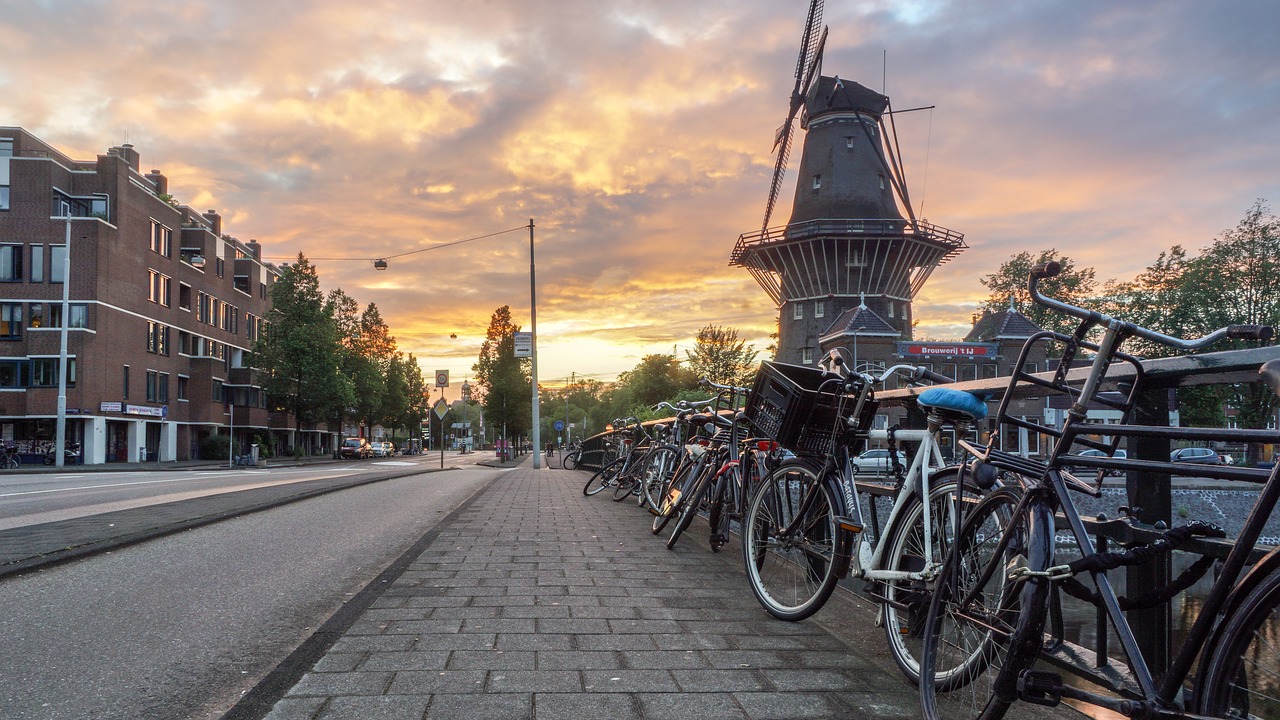 June 23, 2017
June 23, 2017
Delegates in the worlds of planning, engineering, and policy (as well as a few historians, architects, and enthusiasts) converged on the town of Nijmegen, The Netherlands last week for the 2017 The Velo-City Conference. The conference enables the transfer of knowledge on best practices; dissemination of new technologies, designs, and policies; discussion of the health, sustainability, and quality of life benefits associated with cycling; and stakeholder engagement.
The conference was preceded by the Velo-City Scientific Colloquium on Monday, June 12th. Monday’s schedule was more focused towards research and emerging theories. The highlight of the day was the opening plenary from Dr. Casper Chorus of TU Delft, who discussed human behavior aspects of cycling based on the theory that “decision-making tends to be driven by emotions, heuristics, and an unwillingness to compromise.” Speakers throughout the day referred back to Dr. Chorus’ talk, drawing parallel concepts throughout the day and stimulating discussion between attendees with varied perspectives.
Sessions throughout the morning and afternoon connected engineering, planning, and policy factors; human behavior (cycling mode choice); and environmental and safety impacts. Northumbria University Newcastle PhD student Katja Leyendecker discussed frameworks for studies involving cycling with an emphasis on the need to place findings in frameworks at the individual, collective, and universal levels to fully understand impacts at different scales. A key example often discussed is that of helmet use – while each individual wearing a helmet while cycling is decreasing their risk of a fatal crash, the overall cycling population in that area becomes less safe as cycling is viewed as a risky activity, thus decreasing the “safety in numbers” effect, and vehicles may be less conservative in their speeds and passing distance when they see a helmeted cyclist.
 For the most part, discussions around cycling and autonomous vehicles (AVs) lacked new information or insight. Dr. John Parkins of UWE Bristol did bring up an interesting technology and culture question regarding the global AV market. Not only is striping and signage variable across countries and continents, but culture and human interaction are as well. For example the sign of flashing one’s headlights in some countries signals another vehicle to proceed, in some serves as a warning, and in some cities in the US there are rumors that it can get you shot. A global market would mean that vehicle to vehicle communications as well as vehicle to cyclist and pedestrian communications would have to have culturally appropriate settings.
For the most part, discussions around cycling and autonomous vehicles (AVs) lacked new information or insight. Dr. John Parkins of UWE Bristol did bring up an interesting technology and culture question regarding the global AV market. Not only is striping and signage variable across countries and continents, but culture and human interaction are as well. For example the sign of flashing one’s headlights in some countries signals another vehicle to proceed, in some serves as a warning, and in some cities in the US there are rumors that it can get you shot. A global market would mean that vehicle to vehicle communications as well as vehicle to cyclist and pedestrian communications would have to have culturally appropriate settings.
 The afternoon yielded an informative session on cycling and disability. Cycling is inherently inclusive in nature as long as infrastructure is designed to accommodate recumbent bikes, tricycles, and handcycles. It can also enable people by provided self-sufficient, flexible, on-demand transportation options, especially in areas with limited public transportation options. While the issue of semantics around the term “cycling” versus “bicycling” was brought up, experts in the area of disability and cycling seemed to all agree that changing terminology is not important as long as policies, engineering, and planning are accommodating. A car-dominant society actually disables a large amount of society – not just those in the disability community, but also other vulnerable road users, persons without driver’s licenses, etc.
The afternoon yielded an informative session on cycling and disability. Cycling is inherently inclusive in nature as long as infrastructure is designed to accommodate recumbent bikes, tricycles, and handcycles. It can also enable people by provided self-sufficient, flexible, on-demand transportation options, especially in areas with limited public transportation options. While the issue of semantics around the term “cycling” versus “bicycling” was brought up, experts in the area of disability and cycling seemed to all agree that changing terminology is not important as long as policies, engineering, and planning are accommodating. A car-dominant society actually disables a large amount of society – not just those in the disability community, but also other vulnerable road users, persons without driver’s licenses, etc.
An overall focus on culture and societal norms reinforced the idea that infrastructure alone cannot change human behavior. This may be especially true in countries like the United States where public engagement is an integral part of policy change and project planning. Rallying public opinion to support a positive view of cycling culture could help bring planning and design practices to take cyclists into account more often. The United States isn’t there yet, there is still an ‘us’ vs. ‘them,’ ‘cycle-people’ vs. ‘car-people’ mentality, and the focus on future transportation systems revolves around technology and infrastructure, even to the point that D.C. had two infrastructures weeks this year.

 June 23, 2017
June 23, 2017 For the most part, discussions around cycling and autonomous vehicles (AVs) lacked new information or insight.
For the most part, discussions around cycling and autonomous vehicles (AVs) lacked new information or insight.  The afternoon yielded an informative session on cycling and disability. Cycling is inherently inclusive in nature as long as infrastructure is designed to accommodate recumbent bikes, tricycles, and handcycles. It can also enable people by provided self-sufficient, flexible, on-demand transportation options, especially in areas with limited public transportation options. While the issue of semantics around the term “cycling” versus “bicycling” was brought up, experts in the area of disability and cycling seemed to all agree that changing terminology is not important as long as policies, engineering, and planning are accommodating. A car-dominant society actually disables a large amount of society – not just those in the disability community, but also other vulnerable road users, persons without driver’s licenses, etc.
The afternoon yielded an informative session on cycling and disability. Cycling is inherently inclusive in nature as long as infrastructure is designed to accommodate recumbent bikes, tricycles, and handcycles. It can also enable people by provided self-sufficient, flexible, on-demand transportation options, especially in areas with limited public transportation options. While the issue of semantics around the term “cycling” versus “bicycling” was brought up, experts in the area of disability and cycling seemed to all agree that changing terminology is not important as long as policies, engineering, and planning are accommodating. A car-dominant society actually disables a large amount of society – not just those in the disability community, but also other vulnerable road users, persons without driver’s licenses, etc.

